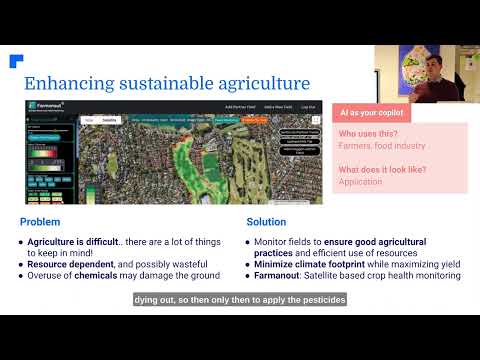Revolutionizing Australia’s Energy Future: How Battery Storage Is Driving the Clean Energy Transition
“Australia’s new 250MW/500MWh battery storage project is part of a massive 10GWh pipeline, revolutionizing renewable energy integration.”
In a groundbreaking development for Australia’s renewable energy landscape, we are witnessing a transformative shift in the nation’s approach to clean energy and grid stability. The recent announcement of a 250MW / 500MWh battery energy storage system (BESS) project marks a significant milestone in Australia’s journey towards a sustainable energy future. This ambitious venture, part of a broader 10GWh pipeline, is set to revolutionize the way we think about and implement renewable energy integration across the country.
As we delve into the details of this monumental project, it’s crucial to understand its far-reaching implications for Australia’s energy infrastructure, environmental goals, and economic landscape. Let’s explore how this battery storage initiative is driving the clean energy transition and reshaping Australia’s energy future.
The Dawn of a New Era in Energy Storage
The announcement of the Limestone Coast North Energy Park project by Pacific Green Technologies, Inc. (OTCQB: PGTK) represents a watershed moment in Australia’s renewable energy sector. With an enterprise value of A$460 million (US$293 million), this development is not just a significant financial investment but a bold statement of intent in the country’s commitment to sustainable energy solutions.
Key features of the project include:
- A 250MW / 500MWh battery energy storage system
- Located in the Limestone Coast region of South Australia
- Expected commercial operations to begin in early 2027
- Part of a larger 10GWh development pipeline across Australia
This utility-scale battery development is poised to play a crucial role in enhancing grid stability and accelerating Australia’s transition to net-zero emissions. It’s a clear indicator of the growing importance of green technology investments in the Australian market and a testament to the country’s dedication to innovative energy solutions.

The Role of Battery Storage in Australia’s Energy Transition
Battery energy storage systems (BESS) are emerging as a critical component in Australia’s renewable energy strategy. These systems offer numerous benefits that are essential for the successful integration of renewable energy sources into the national grid:
- Grid Stability: BESS can respond rapidly to fluctuations in energy supply and demand, helping to maintain a stable and reliable electricity grid.
- Peak Load Management: By storing excess energy during low-demand periods and releasing it during peak times, BESS can help manage peak loads more efficiently.
- Renewable Integration: Battery storage facilitates the seamless integration of intermittent renewable energy sources like solar and wind into the grid.
- Energy Security: BESS enhances energy security by providing backup power during outages or emergencies.
- Cost Reduction: Over time, BESS can help reduce energy costs by optimizing the use of renewable energy and reducing reliance on expensive peaker plants.
The Limestone Coast North Energy Park project exemplifies these benefits, positioning itself as a cornerstone in Australia’s evolving energy infrastructure.
A Closer Look at the Limestone Coast North Energy Park
The Limestone Coast North Energy Park is more than just a battery storage facility; it’s a symbol of Australia’s commitment to innovation in the energy sector. Let’s break down the key aspects of this groundbreaking project:
| Project Aspect | Details |
|---|---|
| Project Name | Limestone Coast North Energy Park |
| Location | Limestone Coast region, South Australia |
| Total Capacity | 250MW / 500MWh |
| Investment Value | A$460 million |
| Investor | Intera Renewables (Palisade Investment Partners) |
| Construction Start | Soon (Exact date TBA) |
| Expected Commercial Operation | Early 2027 |
| Environmental Impact | Significant CO2 reduction (exact figures TBA) |
| Grid Benefits | Enhanced stability, improved peak load management |
| Economic Impact | Job creation, local economic boost (exact figures TBA) |
This comprehensive overview highlights the multifaceted impact of the Limestone Coast North Energy Park on Australia’s energy landscape, economy, and environmental goals.
The Ripple Effect: Implications for Australia’s Energy Future
The development of the Limestone Coast North Energy Park is not an isolated event but part of a larger trend reshaping Australia’s energy sector. This project, along with the broader 10GWh pipeline of battery energy parks, signifies a paradigm shift in how Australia approaches energy generation, storage, and distribution.
“The A$460 million battery energy storage system in South Australia will be operational by 2027, boosting grid stability.”
Key implications of this development include:
- Accelerated Renewable Adoption: Enhanced storage capacity will encourage greater investment in renewable energy sources.
- Improved Grid Resilience: Large-scale battery storage will significantly enhance the stability and reliability of Australia’s electricity grid.
- Economic Opportunities: The burgeoning battery storage sector is creating new jobs and driving economic growth in the clean energy industry.
- Technological Leadership: Australia is positioning itself as a global leader in utility-scale battery technology and implementation.
- Environmental Progress: These projects are crucial steps towards meeting Australia’s emissions reduction targets and combating climate change.

The Role of Technology in Sustainable Energy Solutions
As we witness this revolution in Australia’s energy sector, it’s important to recognize the role of technology in driving sustainable solutions across various industries. While our focus is on energy storage, innovative technologies are making waves in other sectors as well, including agriculture.
For instance, companies like Farmonaut are leveraging cutting-edge technology to revolutionize agricultural practices. Through satellite-based farm management solutions, Farmonaut is making precision agriculture more accessible and affordable for farmers worldwide.
Key technologies driving innovation in sustainable practices include:
- Satellite imagery for crop health monitoring
- AI-driven advisory systems for farm management
- Blockchain-based traceability in supply chains
- Advanced resource management tools
These technological advancements, whether in energy storage or agriculture, share a common goal: to create more efficient, sustainable, and environmentally friendly practices across industries.
The Path Forward: Challenges and Opportunities
While the Limestone Coast North Energy Park and similar projects represent significant progress, the path to a fully sustainable energy future is not without challenges. Some key considerations include:
- Infrastructure Development: Upgrading existing grid infrastructure to accommodate large-scale battery storage systems.
- Regulatory Framework: Evolving regulations to support and incentivize battery storage projects.
- Technological Advancements: Continuous improvement in battery technology for increased efficiency and longevity.
- Supply Chain Considerations: Ensuring a stable and ethical supply chain for battery components.
- Public Awareness: Educating the public about the benefits and safety of large-scale battery storage systems.
Despite these challenges, the opportunities presented by battery storage in driving Australia’s clean energy transition are immense. The successful implementation of projects like the Limestone Coast North Energy Park will serve as a blueprint for future developments, paving the way for a more sustainable and resilient energy future.
Integrating Innovation Across Sectors
As we explore the transformative potential of battery storage in Australia’s energy sector, it’s worth noting how similar innovative approaches are being applied in other industries to promote sustainability and efficiency. For example, in the agricultural sector, companies are leveraging advanced technologies to revolutionize farming practices.
Farmonaut, a leading agricultural technology company, exemplifies this trend by offering satellite-based farm management solutions. Their platform provides valuable services such as:
- Real-time crop health monitoring
- AI-based advisory systems
- Blockchain-based traceability
- Resource management tools
These technologies, much like battery storage systems in the energy sector, aim to optimize resource use, improve efficiency, and promote sustainable practices.
Explore Farmonaut’s API for satellite and weather data integration
Access Farmonaut’s API Developer Documentation
The Global Context: Australia’s Role in the Clean Energy Revolution
Australia’s push towards large-scale battery storage and renewable energy integration is not happening in isolation. It’s part of a global movement towards cleaner, more sustainable energy solutions. Here’s how Australia’s efforts fit into the broader international context:
- Global Leadership: Australia is positioning itself as a leader in utility-scale battery technology, setting an example for other countries to follow.
- International Collaboration: The success of projects like the Limestone Coast North Energy Park could pave the way for international partnerships and knowledge sharing in renewable energy technologies.
- Climate Change Mitigation: These initiatives contribute significantly to global efforts to reduce carbon emissions and combat climate change.
- Economic Opportunities: Australia’s growing expertise in battery storage and renewable energy creates opportunities for technology export and international investment.
As we continue to witness the rapid evolution of Australia’s energy landscape, it’s clear that the country is not just keeping pace with global trends but is actively shaping the future of clean energy.
The Economic Impact: Jobs, Growth, and Innovation
The development of large-scale battery storage projects like the Limestone Coast North Energy Park has significant economic implications for Australia. These projects are not just about energy; they’re about creating jobs, driving economic growth, and fostering innovation.
- Job Creation: The construction, operation, and maintenance of battery storage facilities create numerous job opportunities, from skilled technical roles to support and administrative positions.
- Economic Growth: Investment in renewable energy and storage technologies stimulates economic activity, attracting both domestic and foreign capital.
- Innovation Hub: As Australia becomes a leader in battery storage technology, it’s likely to attract more research and development initiatives, potentially establishing the country as a global innovation hub in clean energy technologies.
- Supply Chain Development: The growth of the battery storage sector will likely lead to the development of local supply chains, further boosting the economy.
These economic benefits extend beyond the energy sector, creating a ripple effect that can positively impact various industries and communities across Australia.
Environmental Benefits: Beyond Carbon Reduction
While the primary environmental benefit of battery storage systems is their role in reducing carbon emissions by enabling greater renewable energy integration, their positive impact extends beyond this:
- Reduced Reliance on Fossil Fuels: By enabling more efficient use of renewable energy, battery storage helps decrease reliance on fossil fuel-based power generation.
- Land Use Efficiency: Large-scale battery storage facilities often have a smaller land footprint compared to traditional power plants, preserving more natural habitats.
- Water Conservation: Unlike many traditional power generation methods, battery storage systems require minimal water for operation, contributing to water conservation efforts.
- Air Quality Improvement: By reducing the need for peaker plants and fossil fuel generation, battery storage indirectly contributes to improved air quality in surrounding areas.
These environmental benefits align with Australia’s broader sustainability goals and contribute to the country’s efforts in addressing climate change.
The Future of Energy Storage in Australia
As we look to the future, the Limestone Coast North Energy Park project is just the beginning of Australia’s journey in large-scale energy storage. The 10GWh pipeline of battery energy parks across the country signals a long-term commitment to this technology. Here’s what we might expect in the coming years:
- Technological Advancements: Continued research and development in battery technology could lead to more efficient, longer-lasting, and potentially more cost-effective storage solutions.
- Integration with Other Technologies: We may see increased integration of battery storage with other renewable technologies, such as solar and wind farms, creating more comprehensive and efficient energy systems.
- Decentralized Energy Networks: The proliferation of battery storage could enable more decentralized energy networks, improving grid resilience and enabling local energy independence.
- Policy and Regulatory Evolution: As the sector grows, we can expect to see evolving policies and regulations to support and optimize the use of battery storage in the national energy strategy.
The future of energy storage in Australia looks promising, with potential for significant positive impacts on the country’s energy security, economic growth, and environmental sustainability.
Lessons for Other Industries: The Power of Innovation
The rapid advancement and adoption of battery storage technology in Australia’s energy sector offers valuable lessons for other industries:
- Embracing Technological Innovation: The success of battery storage demonstrates the importance of embracing new technologies to address long-standing challenges.
- Sustainability as a Driver: The push for sustainable solutions can be a powerful catalyst for innovation and economic growth.
- Collaboration is Key: The development of large-scale energy projects often involves collaboration between various stakeholders, highlighting the importance of partnerships in driving significant change.
- Adaptability: The energy sector’s ability to adapt to new technologies and changing market demands is a lesson in flexibility for all industries.
These lessons can be applied across various sectors, including agriculture, where companies like Farmonaut are already leveraging innovative technologies to drive sustainability and efficiency.
Conclusion: A Bright Future for Australia’s Energy Landscape
The development of the Limestone Coast North Energy Park and the broader 10GWh pipeline of battery storage projects mark a transformative moment in Australia’s energy history. These initiatives are not just about storing energy; they represent a fundamental shift in how we approach energy generation, distribution, and consumption.
As Australia continues to lead the way in large-scale battery storage implementation, we can expect to see:
- A more stable and reliable electricity grid
- Accelerated integration of renewable energy sources
- Reduced carbon emissions and environmental impact
- Economic growth through job creation and innovation
- Enhanced energy security and independence
The clean energy transition driven by battery storage is paving the way for a more sustainable, efficient, and prosperous future for Australia. As we move forward, the lessons learned and technologies developed in this sector will undoubtedly have far-reaching impacts, inspiring innovation and sustainability across various industries and around the globe.
FAQ Section
Q1: What is the significance of the Limestone Coast North Energy Park project?
A1: The Limestone Coast North Energy Park is a 250MW / 500MWh battery energy storage system (BESS) project in South Australia. It’s part of a larger 10GWh pipeline of battery storage developments across Australia, marking a significant step in the country’s transition to renewable energy and improved grid stability.
Q2: How does battery storage contribute to renewable energy integration?
A2: Battery storage systems help balance the intermittent nature of renewable energy sources like solar and wind. They store excess energy during peak production times and release it when demand is high or renewable generation is low, ensuring a stable and reliable electricity supply.
Q3: What are the economic benefits of large-scale battery storage projects?
A3: These projects create jobs in construction, operation, and maintenance. They also attract investment, stimulate innovation in the clean energy sector, and can lead to reduced electricity costs over time by optimizing the use of renewable energy sources.
Q4: How does battery storage technology impact grid stability?
A4: Battery storage systems can respond rapidly to fluctuations in energy supply and demand, helping to maintain a stable frequency on the grid. They also provide backup power during outages and can reduce the strain on the grid during peak demand periods.
Q5: What role does Australia play in the global battery storage market?
A5: With projects like the Limestone Coast North Energy Park, Australia is positioning itself as a leader in utility-scale battery technology implementation. This leadership role could influence global trends in renewable energy adoption and storage solutions.







